When it’s too Hot to Mow Your Lawn!
A healthy lawn provides you and your family with a green, lush and welcoming environment. However, when temperatures rise and the harsh summer sun beats down on your lawn, the ...

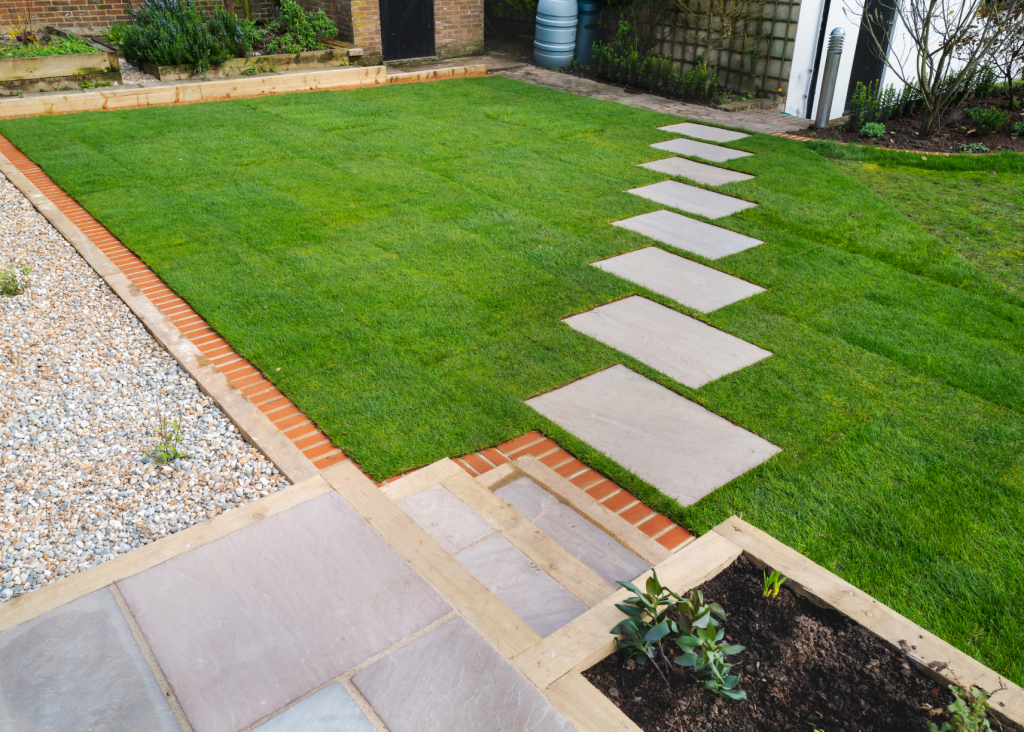
Creating clean edges and lines in your garden can transform a good garden into a gorgeous one. Think of the Gardens of Versailles – they wouldn’t be anywhere near as impressive if it weren’t for the neat edges that occupy the thoughts of eighty full-time gardeners.
While you may not live in a chateau, your home is your castle, and nothing says ‘proud home-owner’ quite like a polished lawn with clean edges.
In this article, we’ll look at how to get the straight lawn edge that will make your lawn the envy of the neighbourhood.
A clean edge is the ultimate finishing touch to a healthy well-manicured lawn.
It’s not just about aesthetics; there are several very good reasons for edging your lawn:
Edging doesn’t need to be done every time you mow, but it will be required more frequently during spring and summer when your lawn is vigorously growing.
It’s not difficult and there’s a variety of lawn edging tools, both manual and powered, available to make it even easier.
Note: Always wear safety glasses and sturdy enclosed shoes or boots and protect your hearing by using earplugs or earmuffs when operating power tools.

The first step is to identify what type and shape of edge you want. Would you prefer to have your lawn stop at an area of bare soil or mulch, leave a margin around the base of large trees, or butt up against an existing flowerbed or hardscape?
Creating a boundary with a permanent edging of rubber, steel, cement, or pavers can make it easier to tame unruly edges regardless of whether they’re straight or curved.
The second step is to decide what type of edging tool best meets your needs.
If you have a small garden and don’t mind putting in a bit of elbow grease, you might opt to use a manual edger.
Those with a larger garden or less time to spare might choose a mechanical edger that will let you get around your lawn faster.
There are three main things to consider when deciding which lawn edging tool to use: how many metres of edging you have, how much time you have to do the edges, and how much you can afford to spend.
Manual edging tools are the cheapest option, most cost less than $100, and include specialist edging shears and long-handled grass shears.
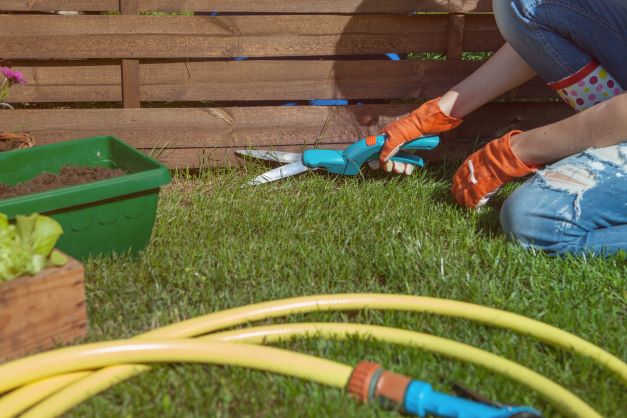 These might take longer to use, and require more physical effort, but have the advantage of allowing you to be more precise, require very little maintenance and are easily stored with your other gardening tools. Shears are ideal for awkward small spots, such as stepping stones or garden beds.
These might take longer to use, and require more physical effort, but have the advantage of allowing you to be more precise, require very little maintenance and are easily stored with your other gardening tools. Shears are ideal for awkward small spots, such as stepping stones or garden beds.
Some manual edging tools rely on you using your body weight to push them into the ground and create a neat edge. Many are shaped like a half moon with a long handle and have a footpeg. Others have a round or star-shaped cutting wheel.
Best results are achieved by using these tools when the ground is soft, damp and offers less resistance.
There’s a large range of mechanical edging tools, some powered by petrol engines and others by battery or electricity through a power cord. They can have one or more wheels.
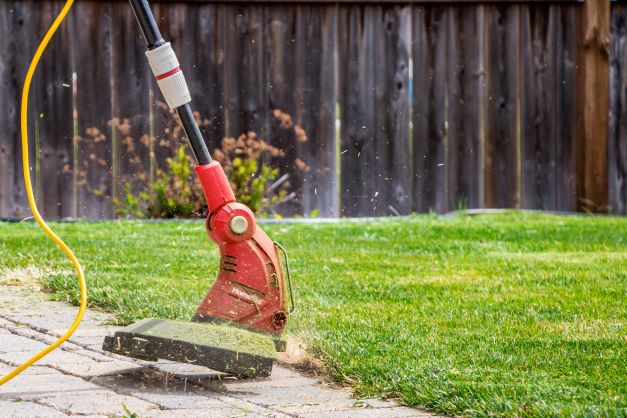 Advantages can include adjustable blade height, giving you the choice of where you want the edge to sit, such as at ground level or slightly below it, and they’ll easily tackle big jobs.
Advantages can include adjustable blade height, giving you the choice of where you want the edge to sit, such as at ground level or slightly below it, and they’ll easily tackle big jobs.
Disadvantages include the upfront expense – four-stroke petrol models can cost up to $700 – plus there’s the ongoing cost of replacement blades and regular servicing.
They can make a lot of noise, spray dirt around if not fitted with a blade guard, and some are quite heavy which makes them less practical for those who are shorter or not as strong.
Electric or battery powered edgers are usually quieter and cheaper at $90 to $300. They can be lighter but can also be less powerful and less sturdy than the petrol-powered option.
Electric models may require a long extension cord, while cordless edgers are limited by the capacity of their battery. It can be annoying to get partway through the job, they have to wait for the battery to recharge so you can finish it off.
Some grass trimmers, also known as whipper snippers or weed whackers, have an edging mode and a head that can be rotated into a vertical position.
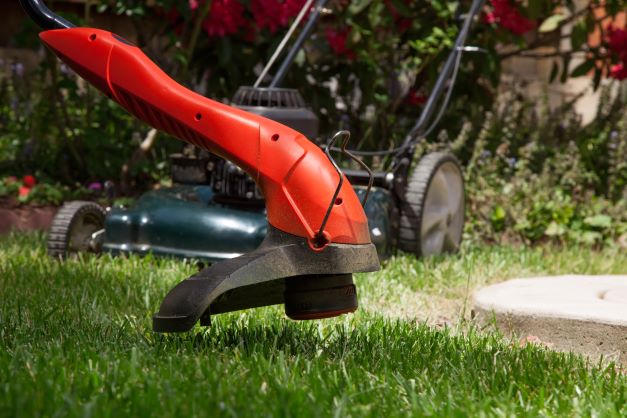 These edgers use a rotating nylon line to cut grass, weeds and other unwanted plants.
These edgers use a rotating nylon line to cut grass, weeds and other unwanted plants.
Some brush cutters, which are more heavy duty and traditionally fitted with blades for more challenging tasks, also can be fitted with a mowing line head.
As is the case with mechanical edgers, grass trimmers are available in electric, battery and petrol-powered models. Electric and battery trimmers are more suited to small areas and those powered by petrol are better for big jobs.
The trick is to make sure the string is vertical along driveways and paths and at an angle to taper grass along fences and retaining walls.
To ensure clean cuts, always start the trimmer clear of the grass and work your way into the edge from the outside.
Different edging materials will bring different characteristics to your garden, depending on the look you’re going for.
For a more rustic look, consider using bricks or timber sleepers for your lawn edge, while more modern options include concreating, or treated steel.
If you’re on a budget, plastic edging may provide an affordable solution.
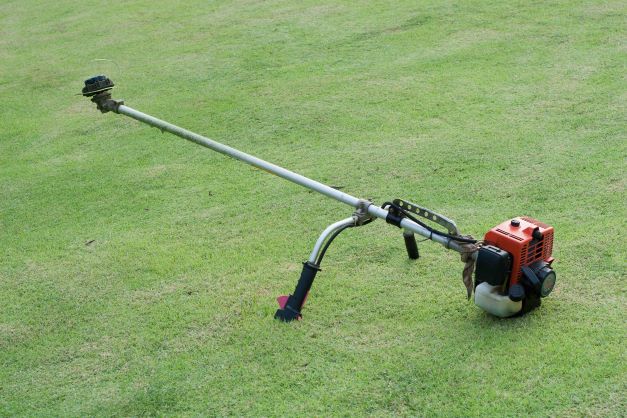
If you’ve never edged your lawn, it can seem a daunting task. The initial project might take some effort, but with practice, you’ll get faster, the result will be better, and it won’t take as long to stay on top of it.
Here is a step-by-step guide:
While most people leave both trimming and edging until after they mow, there’s no hard and fast rule.
In some cases, it makes more sense to do it first – propelling the trimmed and edged grass back onto the lawn allows it to be chopped up when you mow. You can then spread the clippings across the lawn as mulch or collect and dispose of them in one hit.
Trimming around obstacles and doing the edges first helps make mowing faster because you’re not trying to get in as close. You’re also less likely to damage trees, hardscaping, mailboxes, and fences.
If you love the look of a clean edge all year round, you might also consider installing metal garden edging for a neat, modern finish.
The secret to a beautiful, polished lawn is to take the time to trim your edges. A professional finish requires the right tools, so you will need to invest in manual or power trimming tools to do the job. The trick to a perfect edge is to plan your path, and trim regularly to keep your lawn in tip-top shape.
Always read the safety directions and instructions on the product label before use.